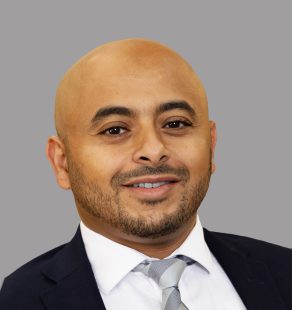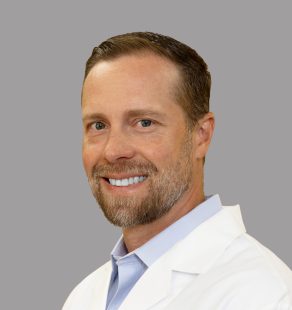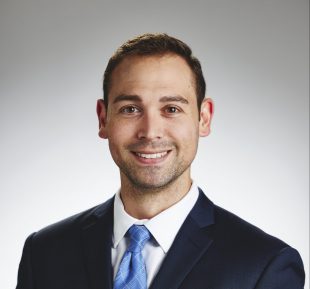Shoulder injuries are extremely common and are arguably the most frustrating of injuries to overcome. At Union County Orthopaedic Group, a Division of OrthoNJ, we understand just how difficult it can be to deal with severe or ongoing shoulder issues.
When it comes to a joint as complex and important as the shoulder, athletes trust Union County Orthopaedic Group, a Division of OrthoNJ, to provide them with top quality orthopedic care. Our orthopedic surgeons specialize in the shoulder joint and guide patients through every type of injury, from a sudden sports injury like a rotator cuff tear, to long lasting and complicated issues like a frozen shoulder. Guiding our patients through the process of healing their shoulder and regaining the lifestyle they’re used to is our main mission. Richard P. Mackessy, MD, Christopher Ropiak, MD, & Mina Abdelshahed, MD, are all top-rated shoulder surgeons and are known for their knowledgeable expertise by referring physicians, as well as the many shoulder patients who have been treated at Union County Orthopaedic Group, a Division of OrthoNJ,.
Conditions and Injuries of the Shoulder:
- AC Joint Osteolysis (Weightlifter’s Shoulder)
- Adhesive Capsulitis of the Shoulder
- Biceps Tendon Tear
- Dislocation of the Shoulder
- Frozen Shoulder
- Impingement of the Shoulder
- Shoulder Labral (SLAP) Tear
- Rotator Cuff Tear
- Shoulder Bursitis
- Shoulder Instability
- Shoulder Fracture
- Shoulder Separation
Treatments of the Shoulder:
- Arthroscopic Surgery
- Shoulder Replacement Surgery
- Rotator Cuff Repair
- Labral Repair
Anatomy of the Shoulder:
Our shoulders are the most mobile joint in our bodies, making them the most unstable. This instability leads to frequent injury and often chronic, or ongoing, symptoms. Athletes of all sports almost always encounter shoulder pain or issues of some kind, as well as those of us with more moderate activity levels. Conditions affecting the shoulder can cause chronic pain or other injuries in areas like the neck, elbow, or wrist, that can have an impact our daily life.
The instability of the shoulder joint also makes it one of the most complicated joints to treat. This is why it’s important to visit an orthopedic shoulder surgeon you trust as soon as you feel any pain or discomfort in the area. Treating shoulder conditions early and properly is crucial to regaining the most mobility possible in the joint.
Joints:
The first joint that makes up our shoulder is actually located at our neck. The protrusion of the clavicle that you feel on either side of your neck is where the collarbone meets the sternum, or the breastbone. This joint, known as the sternoclavicular joint, is the only joint that holds our arm onto our bodies. It also supports the shoulder as we use our arms, and helps us raise and lower our shoulders as we do when we shrug.
The other end of our collarbone meets our scapula, or shoulder blade, in the acromioclavicular (AC) joint. The acromion is the curved end of our shoulder blade that lies on the top of our shoulder, over the main ball and socket joint. This joint hardly moves at all, but instead serves to pull the shoulder joint away from the body and hold it there so it can move freely, as well as protect the veins, nerves, and other components of the joint.
Our shoulder joints offer us so much mobility because the main joint consists of a very shallow ball and socket structure called the glenohumeral joint. The outermost point of our triangular scapula bone forms a shallow cup called the glenoid. Our upper arm bone, or humerus, has a rounded head that sits in the cup of the glenoid. All the rotation and movement of our arms occur in the glenohumeral joint.
Because the glenoid is so shallow, we can completely rotate our arms at the shoulder and move them in many different directions. However, this shallow cup cannot hold the head of the humerus very well at all, forcing the shoulder joint to rely on cartilage, ligaments, tendons, and muscles to hold it together. When any of these vulnerable tissues are damaged, the whole joint can be compromised.
Cartilage:
A number of different types of cartilage play an important role in the proper functioning of our shoulder joint. Perhaps the most frequently damaged cartilage in our shoulder joint is the extremely important labrum. The labrum is a strong, fibrous cartilage that lines the outer rim of the glenoid, holding the head of the humerus in its socket. It is crucial for holding the ball and socket portion of our shoulder joint together, but can be compromised easily since it can be strained and rubbed in every position that we rotate our arms.
A slippery, rubbery cartilage lines the ball and socket of the humerus and glenoid, providing a smooth surface for the bones to glide against each other on. The lack of friction allows us to move our shoulder without damaging the bones. Arthritis affecting the shoulder can wear down this cartilage, not only damaging the bones but causing improper movement within the joint. This can lead to irritation or breakage of the labrum and a host of other chronic shoulder issues which may arise. Like all joints, the sternoclavicular and AC joints are lined with articular cartilage, despite the fact that they do not offer nearly as much movement as the glenohumeral joints.
Ligaments:
Ligaments form an individual joint capsule, or sealed sac, around each joint in the shoulder. These capsules are lined with synovium, the main purpose of which is to produce synovial fluid, a lubricating substance that aids in frictionless movement between the bones in the joint. While there are a number of ligaments that work together in complex designs, two main ligament systems support the shoulder and keep it stable as we move.
The coracoclavicular ligaments are two ligaments, the conoid and trapezoid, that work together to hold the AC joint together. They’re mostly injured during a dislocation of the collarbone in sports injuries and sudden accidents.
The glenohumeral ligaments are three fibrous bands that keep the main ball and socket joint in our shoulder together. They crisscross the glenohumeral joint to hold the humerus to the scapula and support the joint as we rotate our arms. They’re often torn during shoulder dislocations and can become damaged from overuse of the shoulder.
Tendons, Muscles, & Bursae:
Our rotator cuff is a structure of four tendons and four muscles that is integral for moving and stabilizing the shoulder. The supraspinatus, infraspinatus, teres minor, and subscapularis muscles connect to the appropriate bones of our shoulder via tough tendons, a system that makes each muscle responsible for moving our arms in a certain way. We use our small supraspinatus muscles when we lift our arms out to the sides of our bodies, while the infraspinatus allows us to rotate our arm outward. The teres minor is attached to the back of our shoulder blade and it helps us to rotate our arms as well. The subscapularis is a large triangular muscle lying along the inner part of our scapula. It not only help us rotate our arm inwards but prevents the humeral head from dislocating during most forceful movements of the shoulder.
Bursae, or slippery, squishy sacs, lie between the AC joint and the glenohumeral joint on the supraspinatus tendon. It acts as a cushion between the bones of the AC joint and the vulnerable rotator cuff muscles below it. These sacs, known as the subacromial-subdeltoid bursa, keep the bones from rubbing against and irritating the tissues as we move our shoulders. However, these bursa can become irritated themselves for a number of reasons, leading to shoulder bursitis.





